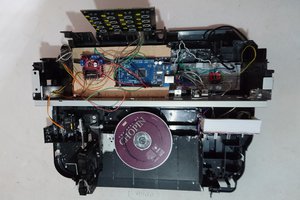Coil Specs: 14g wire. First Coil: 32 turns, 3 Layers Second Coil 42 turns, 2Layers
Capacitors: 450v 10500 microFarad x 2
Firing Circuit: Arduino Controlled SCRs
SCRs: 5x in parallel eupec tt66 SCR for 6750A peak @ 10ms and 1 eupec tt500 SCR with 14.5KA peak @ 10ms
Gates: IR LEDs, and Photo Diodes.
Barrel: .5: ID .625" OD poly-carbonate tube
Charging Circuit: Variac-step up transformer-full wave bridge rectifier-2x 1000 ohm 500 watt resistors in parallel-capacitors, Caps are wired in parallel with a diode in between the positives of each to allow charging of both at the same time but the discharging of each at separate times.
The peak output per coil is close to 4000 amps @ 450v.
Current projectile speeds are approaching 300fps with projectile kinetic energy around 60 ft-lbs.
The Arduino mess is a work in progress it does a few things for me: 1. Fires the Coilgun (first coil, and also does the timing for the second coil) 2. Projectile Speed in FPS.
Projectile speed measurements are taken via 2 gates of photo diodes.
System Design:
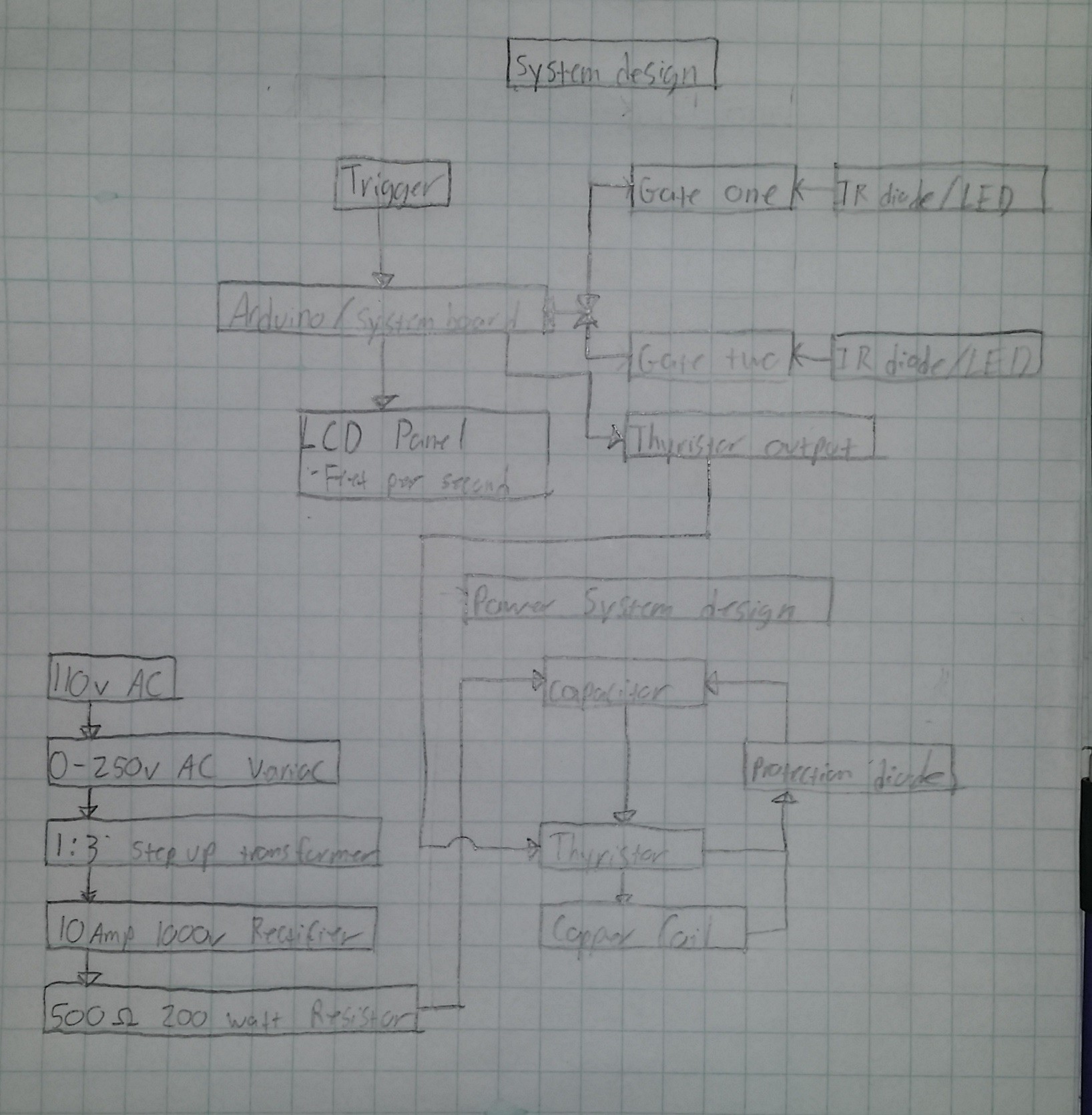
 jeff.ballard.86
jeff.ballard.86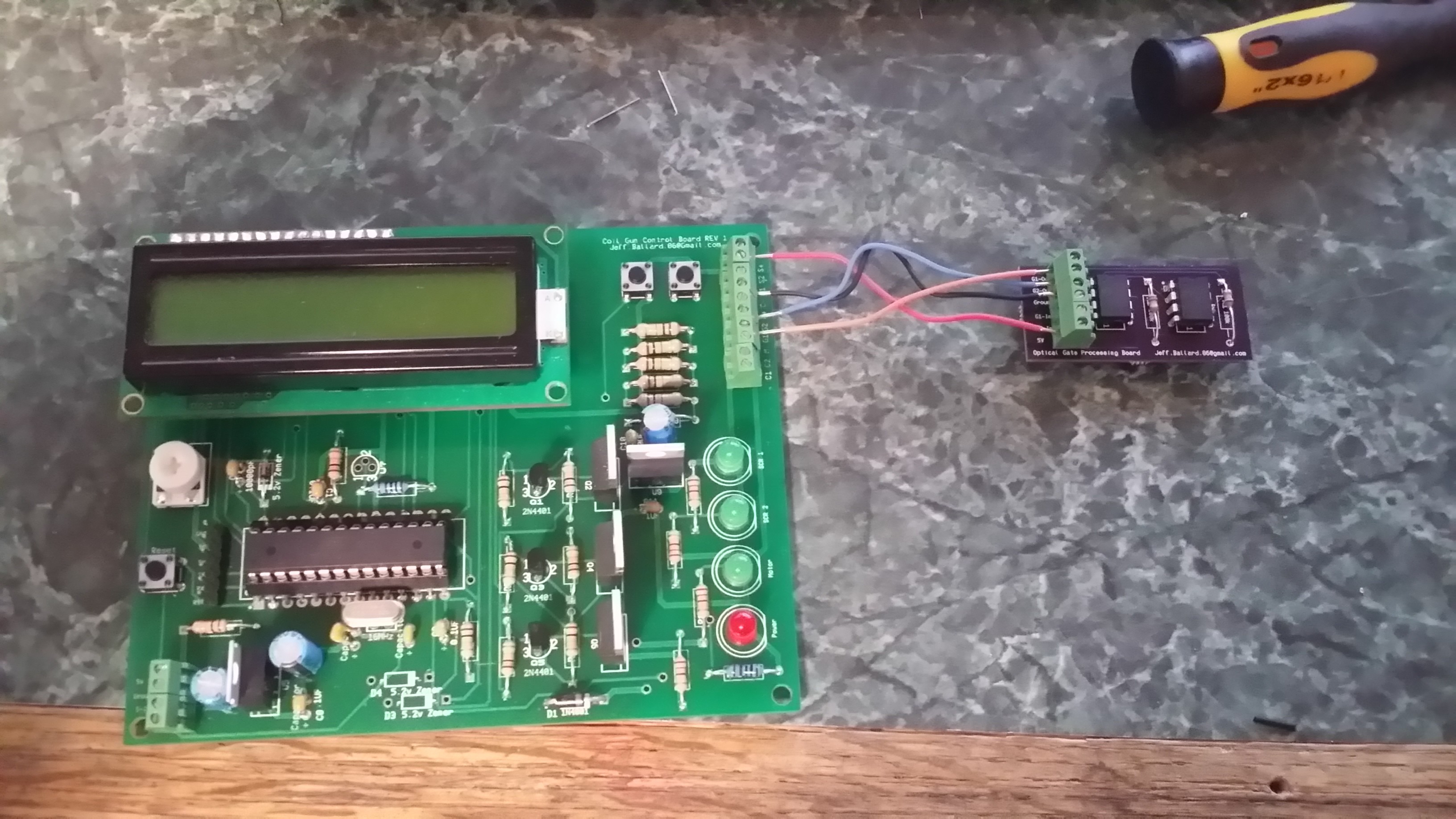
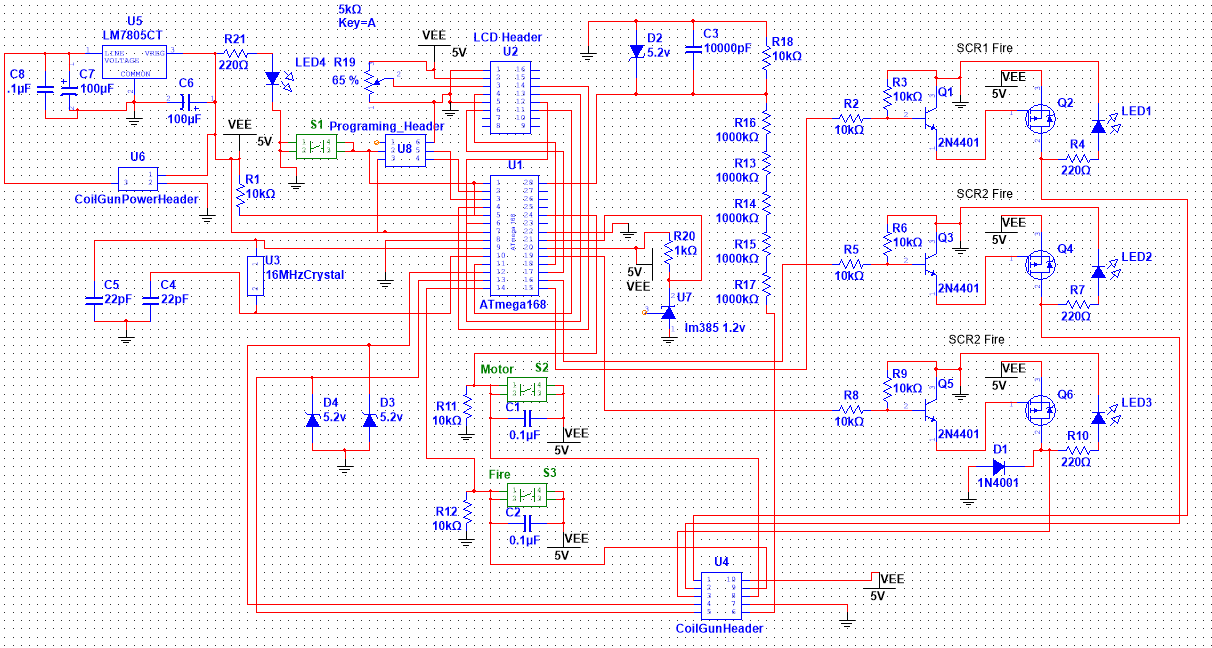
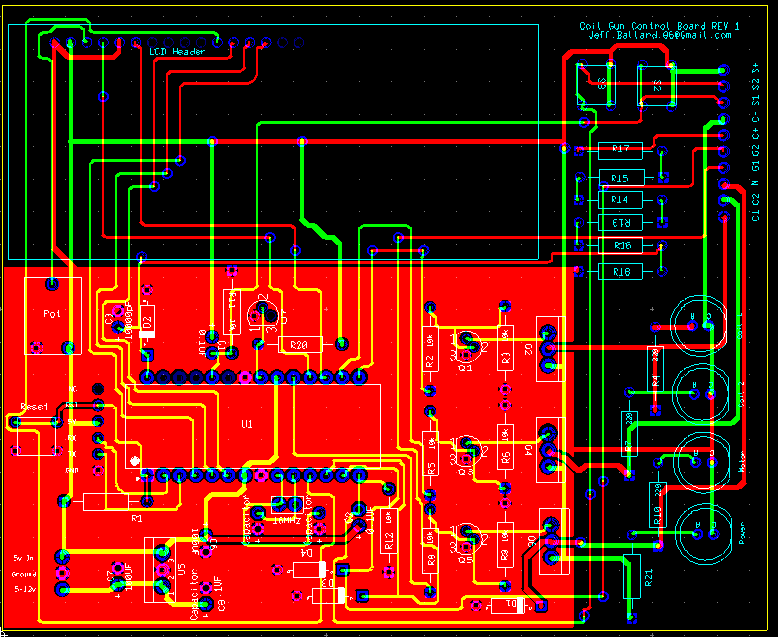

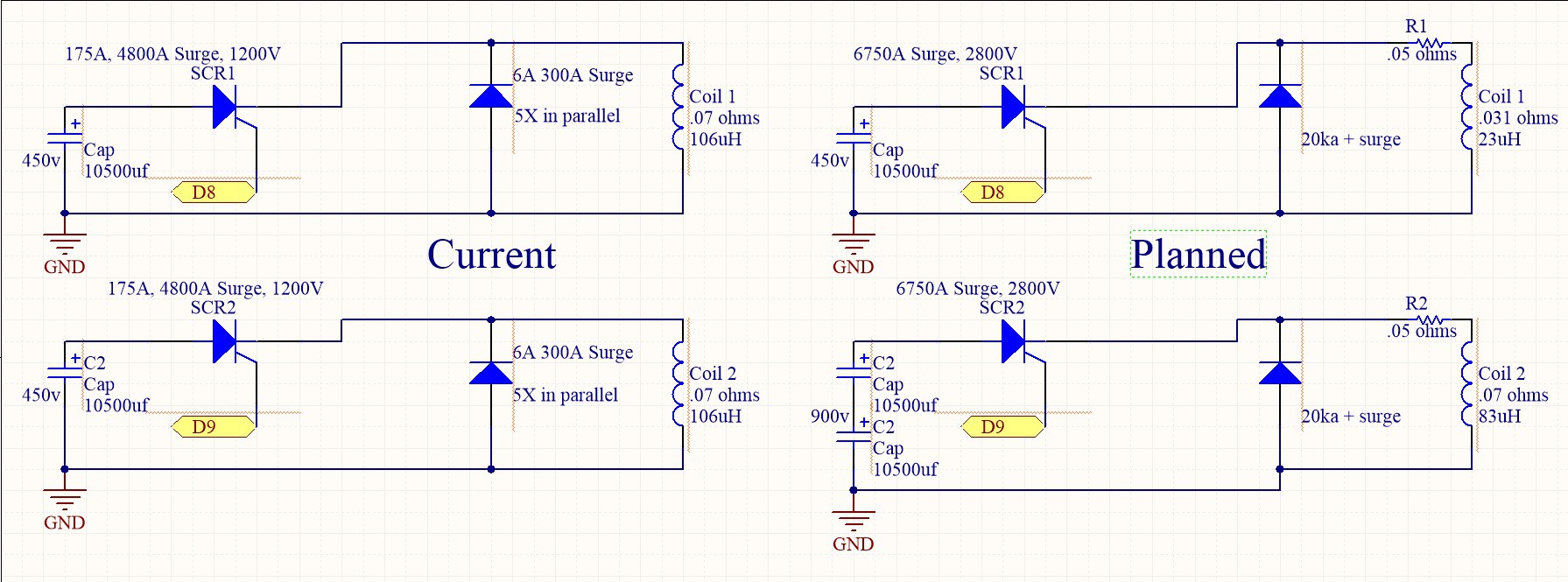









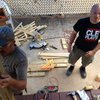

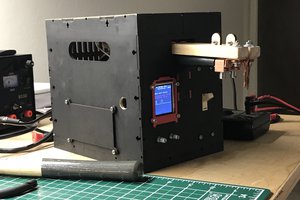
 Timo Birnschein
Timo Birnschein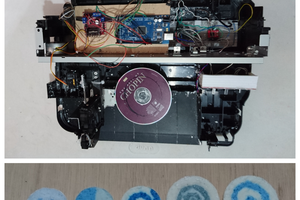
 Guillermo Perez Guillen
Guillermo Perez Guillen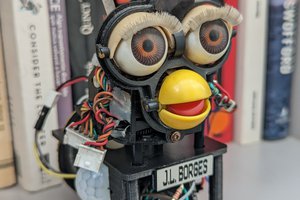
 Roni Bandini
Roni Bandini